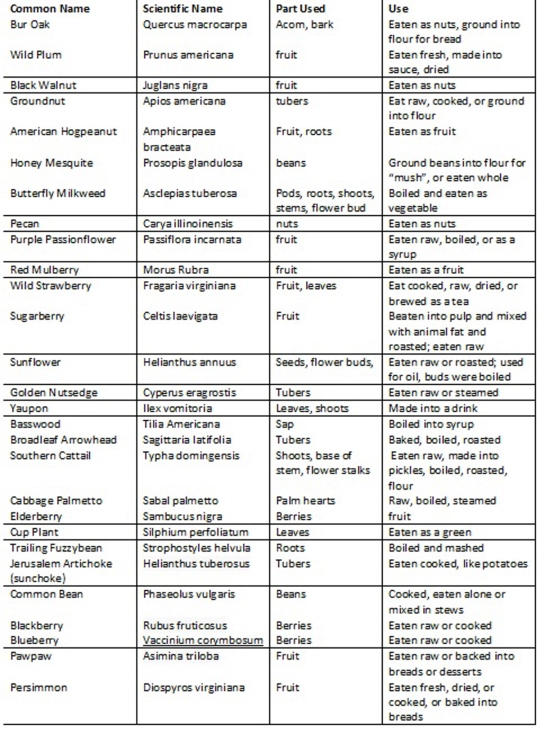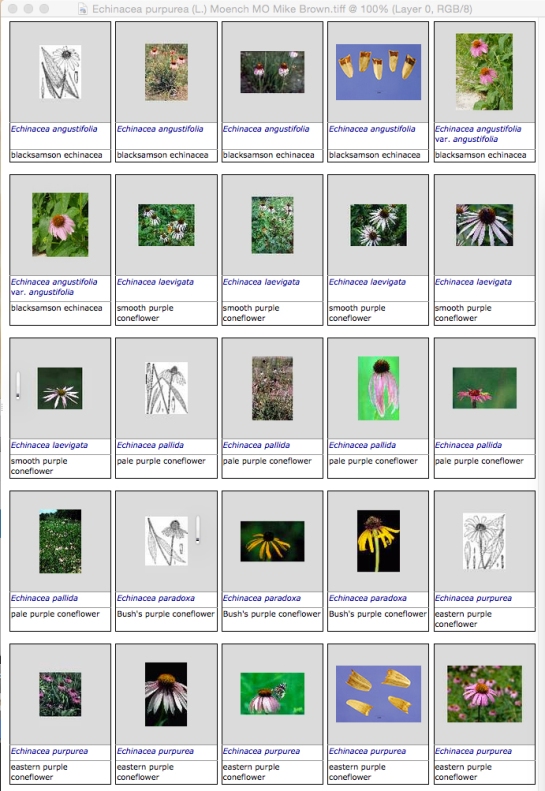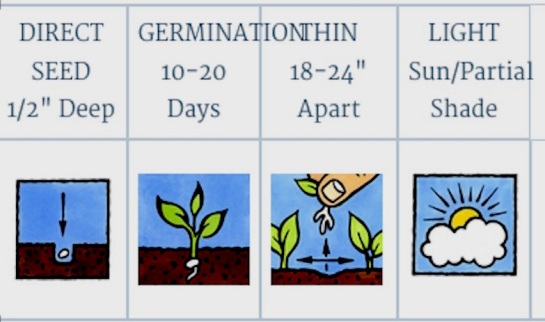Congressional tweet handles;congress tweets
People Killing for Water Global Water Wars Planning-
Michael Brown Native Plants Institute Walnut Park.
Throw us some seeds Congressional Black Caucus
Rep. Keith Ellison (@keithellison) of Minnesota
Rep. Chaka Fattah (@chakafattah) of Pennsylvania
Rep. Charlie Rangel (@cbrangel) of New York
Rep. Maxine Waters (@MaxineWaters) of California
Rep. Laura Richardson (@RepLRichardson) of California
Rep. Ed Towns (@oversightdems) of New York
Rep. Sheila Jackson Lee (@JacksonLeeTX18) of Texas
Rep. Hank Johnson of Georgia (@rephankjohnson) of Georgia
Rep. Carolyn Kilpatrick (@repkilpatrick) of Michigan
Rep. Marcia Fudge (@marciafudge) of Ohio
Rep. Bobby Rush (@BobbyRushNews) of Illinois
Rep. Jesse Jackson (@jacksonjronline) of Illinois
Rep. Sheila Jackson Lee (@JacksonLee18) of Texas… campaign
Del. Eleanor Holmes Norton (@eleanornorton) of the District of Columbia
Sen. Roland Burris (@rolandwburris) of Illinois
Rep. Kendrick Meek (@KendrickMeek) of Florida
No Twitter account… yet
CBC Chairwoman Barbara Lee of California
Rep. Diane Watson of California
Rep. Bennie Thompson of Mississippi
Rep. Mel Watt of North Carolina
Majority Whip Jim Clyburn (@majoritywhip…hmm)
Rep. Alcee Hastings of Florida
Rep. Emanuel Cleaver of Missouri… excellent web site and no twitter account?
Rep. John Conyers of Michigan… the oldest member of the CBC
Rep. Corrine Brown of Florida
Rep. Al Green of Texas
Rep. Donald Payne of New Jersey
Rep. G.K. Butterfield of North Carolina
Rep. Artur Davis (@arturdavis was election site…) of Alabama
Rep. Bobby Scott of Virginia
Rep. Danny Davis (there is …@dannydaviswatch… however) of Illinois
Rep. Lacy Clay of Missouri
Rep. David Scott of Georgia
Rep. John Lewis of Georgia
Del. Donna Christensen of the Virgin Islands
Rep. Greg Meeks of New York
Rep. Sanford Bishop of Georgia
Rep. Elijah Cummings of Maryland
Rep. Andre Carson of Indiana… the youngest member of the CBC
Rep. Donna Edwards of Maryland
Rep. Gwen Moore (@repgwenmoore) old account… of Wisconsin
Rep Cedric Richmond,Rep Steve Scalise,Rep Garrett Graves,Rep Bennie Thompson Louisiana New Orleans
You are here:
Home / Plant Profile “Indigenous” refers to plants that are native to the Americas, i.e. weren’t brought over after European contact, circa A.D. 1492. #NativePlants

LICORICE
Other Names:
Acide Glycyrrhizique, Acide Glycyrrhizinique, Alcacuz, Alcazuz, Bois Doux, Bois Sucré, Can Cao, Chinese Licorice, Deglycyrrhized Licorice, Gan Cao, Gan Zao, Glabra, Glycyrrhiza, Glycyrrhiza glabra, Glycyrrhiza glabra typica, Glycyrrhiza glabra v…
Many “licorice” products manufactured in the U.S. actually don’t contain any licorice. Instead, they contain anise oil, which has the characteristic smell and taste of “black licorice.”Licorice is also used in an herbal form called Shakuyaku-kanzo-to to increase fertility in women with a hormonal disorder called polycystic ovary syndrome. In combination with other herbs, licorice is also used to treat prostate cancer and the skin disorder known as eczema.
The chemicals contained in licorice are thought to decrease swelling, thin mucus secretions, decrease cough, and increase the chemicals in our body that heal ulcers.A perennial for zones 7-10. The source of most commercial licorice used in the making of candy, liquor, and as a sweetner for herb tea. Extracts flavour tobacco, beer, soft drinks and pharmaceutical products. Powerful anti-inflammatory properties effective for arthritis, gastritis, canker sores. Also a mild laxative. 3 year old roots are harvested in the autumn.
FIND
Seeds for plants use in Medicine Uses HERE
This species is also used in the treatment of bleeding from cut, cutting wound, bullet wound, footmud sore, gastric ulcer, jaundice, scabies and septic sore (Uddin, 2006); dyspepsia, dysentery,gastric ulcers, haemorrhages from cuts and wounds, itches and poultiching wound (Ghani, 1998);gastric pain (Partha and Hossain, 2007) and dysentery, dyspepsia, gastric ulcers, to stop and curehaemorrhages from cut and bruises, itches and wounds (Yusufet al., 2009).

Native Wild Plants of the Gulf Coast
*from USDA culturally significant plant guide and other resources
**within a 200 mile radius
“Indigenous” refers to plants that are native to the Americas, i.e. weren’t brought over after European contact, circa A.D. 1492.
learning more about the parts of plants Michael Brown Native Plants Institute Walnut Park (what IS a tuber anyway?) check out more in-depth diagrams and definitions here: http://ag.arizona.edu/pubs/garden/mg/botany/plantparts.html
Plant guides for many of the above plants can be found on the USDA’s website: http://plants.usda.gov/java/
Prairie, Purple Coneflower
Catalog #0300
| (Echinacea purpurea) One of the very best for attracting butterflies and birds, this showy and easy-to-grow plant adds a flashy touch to the late summer landscape. Blooms heavily from July through September. Will tolerate clay soils. Plants reach 3-4′ tall. Perennial. Hardy to zone 4.
|
Echinacea purpurea (L.) Moench For Mike Brown Lesson Plans
eastern purple coneflower
Image of Echinacea purpurea

LICORICEOther Names:Acide Glycyrrhizique, Acide Glycyrrhizinique, Alcacuz, Alcazuz, Bois Doux, Bois Sucré, Can Cao, Chinese Licorice, Deglycyrrhized Licorice, Gan Cao, Gan Zao, Glabra, Glycyrrhiza, Glycyrrhiza glabra, Glycyrrhiza glabra typica, Glycyrrhiza glabra v…
- Common name: Purple coneflower
- Cast seeds of native species to the earth and to the winds once in a while – as a way of giving something back.
studies have shown that purple coneflower extracts do fight certain viruses and appear to stimulate the immune system to ward off bacterial infection
Laboratory findings have shown that purple coneflower is effective in healing superficial wounds
Herbalists usually recommend the use of Echinacea purpurea in boosting general immunity in the event of colds, flu, respiratory tract infections, and mild bladder infections. Echinacea purpurea or purple coneflower is usually administered in the form of dried root or herb, as tea, standardized tincture extract, powdered extract, tincture and as stabilized fresh extract.
Its beautiful pink-purple petal is edible, making it an excellent salad garnish.
- Cone Flower Throw some seeds, garden rather than depleting natural stands.
Terminalia bellirica seeds have an oil content of 40%, whose fatty-acid methyl ester meets all of the major biodiesel requirements in the USA (ASTM D 6751-02, ASTM PS 121-99), Germany (DIN V 51606) and European Union (EN 14214). The seeds are called bedda nuts.
PLEASE seek guidance if you do not know how to use these herbs properly!! I will not be held responsible for the improper ingestion or other improper uses of herbs or wild edible plants. This information is posted here for educational purposes, and is not intended to diagnose nor prescribe.
Information within this site is Void where prohibited by law.
Morel Mushrooms
Morel Mushrooms, also known as sponge, pinecone, and honeycomb mushrooms, are the most popular wild mushroom in Missouri and the United States. They range in color from tan to pale gray to yellow and the surface is covered with pits and ridges. They vary in size, but can grow to be 12 inches tall. Many nature lovers hunt for this fine fungus in mid April and early May. Keep a close eye on the lilac bushes – when they bloom, it is time to look for mushrooms. They grow in moist woodlands and river bottoms when the weather has been consistently warm and rainy. They are considered a delicacy and are sold commercially for a huge price. They are delicious fried, stewed, baked, creamed, or stuffed. Medicinal uses. Native Americans used the bark in infusion for treating colds, coughs, and dysentery. Tea
Stuffed Morels
Ingredients
1 doz. medium size morels
1can flaked crabmeat
1 egg, beaten
1/4 cup salad oil
2 tbl mayonaise
2 tbl chopped sweet onions
2 tsp fresh squeezed lemon juice
1/2 cup of seasoned bread crumbs
2 tbl melted butter or margarine
Directions
In a bowl, combine crabmeat, egg, salad oil, mayonaise, onions, lemon juice, and 1/4 of bread crumbs. Wash morels thouroughly but gently under running water. Fill morel “shells” with mixture. Combine remaining 1/4 cup of breadcrumbs with melted butter and sprinkle over mixture. Place the stuffed Morels in a pan. Bake in the oven for approximately 15 minutes at 375 degrees fahrenheit. Serve Hot.
Warning!
Though morels are edible and delicious, there are many wild mushrooms that are not safe for humans to eat. Never try tasting a wild plant unless you are absolutely sure it is not poisonous or harmful to the body.
General Information
Symbol: ECPU
Group: Dicot
Family: Asteraceae
Duration: Perennial
Growth Habit: Forb/herb
Native Status: CAN I
L48 N
Characteristics
Fact Sheet (pdf) (doc)
Plant Guide (pdf) (doc)
Data Source and Documentation
About our new maps
Symbol: ECPU
Plants-NRCS Logos
NRCS
- Seeds
Cultural uses: Purple coneflower has a long history of medicinal use. Native Americans used it as an antidote for snake bit and other venomous bites and stings. It was also used in a smoke treatment for headaches. Purple coneflower was used to calm toothaches and sore gums, and tea form it was drunk to treat colds, mumps, arthritis, and a blood purifier (often a euphemism for the treatment of venereal diseases). Further, it was used as a treatment for pain, indigestion, tumors, malaria and hemorrhoids. After a long period of disregard, purple coneflower has come back into vogue in recent years. It is used primarily as an immune-system booster and it has been used as a treatment for skin diseases such as eczema and psoriasis, boils and wounds, burns, cold sores and genital herpes. It is also recommended for use to treat bronchitis, tonsillitis, meningitis, tuberculosis, abscesses, whooping cough, arthritis and ear infections.:
lower 48 status L48 Alaska status AK Hawaii status HI Puerto Rico status PR Virgin Islands status VI Navassa Island NAV Canada status CAN Greenland status GL Saint Pierre and Michelon status SPM North America NA
click on a thumbnail to view an image, or see all the Echinacea thumbnails at the Plants Gallery
©Larry Allain. USGS National Wetlands Research Center (NWRC).
©Thomas G. Barnes.
©Thomas G. Barnes. Barnes, T.G., and S.W. Francis. 2004. Wildflowers and ferns of Kentucky. University Press of Kentucky.
Steve Hurst. Provided by ARS Systematic Botany and Mycology Laboratory. United States, IL, Highland Park.
©Jeff McMillian. Provided by Almost Eden. United States, LA. Usage Requirements.
no standard photo
©Jeff McMillian. Provided by Almost Eden. United States, LA. Usage Requirements.
©Jeff McMillian. Provided by Almost Eden. United States, LA. Usage Requirements.
©William S. Justice. Provided by Smithsonian Institution, Department of Botany.
Britton, N.L., and A. Brown. 1913. An illustrated flora of the northern United States, Canada and the British Possessions. 3 vols. Charles Scribner’s Sons, New York. Vol. 3: 475. Provided by Kentucky Native Plant Society. Scanned by Omnitek Inc.
CONEFLOWER
Synonyms
Symbol Scientific Name
BRPU15 Brauneria purpurea (L.) Britton
ECPUA Echinacea purpurea (L.) Moench var. arkansana Steyerm.
RUPU9 Rudbeckia purpurea L.
Order Asterales
Family Asteraceae ⁄ Compositae – Aster family
Genus Echinacea Moench – purple coneflower
Species Echinacea purpurea (L.) Moench – eastern purple coneflower
Legal Status
Threatened and Endangered Information:
This plant is listed by the U.S. federal government or a state. Common names are from state and federal lists.
Florida
purple coneflower
Endangered
Michigan
purple coneflower
Probably Extirpated
Related Links
More Accounts and Images
ARS Germplasm Resources Information Network (ECPU)
Native: (links to other web resources are provided for some distributions)
- NORTHERN AMERICA (Check conservation status in U.S. & Canada in NatureServe Explorer database)
Northeastern U.S.A.: United States – Indiana, Michigan [s.], Ohio
North-Central U.S.A.: United States – Illinois, Iowa [s.], Kansas [Cherokee Co.], Missouri, Oklahoma [e.], Wisconsin
Southeastern U.S.A.: United States – Alabama, Arkansas, Georgia, Kentucky, Louisiana, Mississippi, North Carolina, Tennessee
South-Central U.S.A.: United States – Texas
Integrated Taxonomic Information System (BRPU15)
Integrated Taxonomic Information System (ECPU)
Integrated Taxonomic Information System (ECPUA)
Kemper Center for Home Gardening (ECPU)
Garden Uses
Excellent, long-blooming flower for massing in the border, meadow, native plant garden, naturalized area, wildflower garden or part shade area of woodland garden. Often massed with black-eyed Susans (rudbeckias).
Lady Bird Johnson Wildflower Center Native Plant Information Network (ECPU)
A popular perennial with smooth, 2-5 ft. stems and long-lasting, lavender flowers. Rough, scattered leaves that become small toward the top of the stem. Flowers occur singly atop the stems and have domed, purplish-brown, spiny centers and drooping, lavender rays. An attractive perennial with purple (rarely white), drooping rays surrounding a spiny, brownish central disk.
The genus name is from the Greek echino, meaning hedgehog, an allusion to the spiny, brownish central disk. The flowers of Echinacea species are used to make an extremely popular herbal tea, purported to help strengthen the immune system; an extract is also available in tablet or liquid form in pharmacies and health food stores. Often cultivated, Purple Coneflower is a showy, easily grown garden plant.
NPIN: Native Plant Database
-
Mikania scandens
-
Mikania scandens is a species of flowering plant in the aster family, Asteraceae. Its common names include climbing hempvine, climbing hempweed, and louse-plaster.
| Climbing Hempweed Mikania cordata(Burm. f.) RobinsonFamily:Asteraceae Synonym (s):Eupatorium cordatumBurm. f.,Mikania volubilisWilld.,Mikania scandens auct.non L. Vernacular name (s):Assamlata,Refuzi Lata,Tarulata,Toofainna Lata(Bengali); ClimbingHempweed, Heartleaf Hempvine (English);Assam Ludi,Sheikh Mujib Atak(Chakma);AssamLata,Debaloti,Khainkhambo,Mrakhawbow,Ripujinui,Rifuji Nuiyee,Shushelanway,Wainya(Marma);Bainyachu(Khumi);Asamlata(Tonchonga);Athisaheph(Mandi) and Rajjamara,Dukhelaki(Tripura{
Rich source of vitamins A and C, also contains vitamin B. This species is also used in the treatment of bleeding from cut, cutting wound, bullet wound, foot
mud sore, gastric ulcer, jaundice, scabies and septic sore (Uddin, 2006); dyspepsia, dysentery,
gastric ulcers, haemorrhages from cuts and wounds, itches and poultiching wound (Ghani, 1998);
gastric pain (Partha and Hossain, 2007) and dysentery, dyspepsia, gastric ulcers, to stop and cure
haemorrhages from cut and bruises, itches and wounds (Yusuf
et al., 2009).
Other uses:
Leaves are used as vegetables. It is also used as a remedy for snakebite and scorpion
sting.
Conservation status in the study area:
Commonly found in the local areas. No measure taken by the local people to conserve this species. In secondary forests, the species becomes as an alien invasive species by suppressing the growth and development of native regenerating species. Market potential/Domestication potential/Plantation potential/any pharmaceutical use:
It can be
domesticated as food plan
Leaf paste is applied over the
wounded area to stop haemorrhage.
Khumi, Marma and Tripura Mikania scandens
Height: Up to 15 feet |
Native American Ethnobotany (University of Michigan – Dearborn) (ECPU)
USF Atlas of Florida Vascular Plants (ECPU)
University of Tennessee Herbarium (Distribution) (ECPU)
University of Wisconsin – Stevens Point Freckmann Herbarium (ECPU)
Related Websites
ATTRA-Echinacea as an Alternative Crop (ECPU)
FL-University of Florida Cooperative Extension Service (ECPU)
Forestry Images (ECPU)
HerbMed (ECPU)
Herbal Information Resources (ECPU)
KS-Great Plains Nature Center (ECPU)
MI-Department of Natural Resources (ECPU)
MO-MissouriPlants.com (ECPU)
NC-North Carolina Arboretum (ECPU)
NC-North Carolina State University Perennial Flowers (ECPU)
NC-North Carolina State University Plant Fact Sheet (ECPU)
NY-Cornell Herbaceous Perennials (ECPU)
National Center For Contemporary And Alternative Medicine (NIH) (ECPU)
OH-Ohio State University Horticulture (ECPU)
TN-Vanderbilt University Bioimages (ECPU)
TX-Lady Bird Johnson Wildflower Center (ECPU)
TX-Texas A&M Horticulture (ECPU)
Other common names include: Willow Herb, Rosebay Willowherb, and Yanagiran. Native Americans used the Willowherb plant as a good source of vitamin C and pro-vitamin A. Medicinally, the herb seeds can also be grown to relieve inflammation, draw out infection in wounds, and to treat burns.
Fireweed is very attractive to bees and butterflies, and Fireweed honey has become quite sought after. Fireweed seeds do best with a cold/moist treatment for 4 weeks prior to planting, or directly sow the herb seeds outdoors in the fall.












































